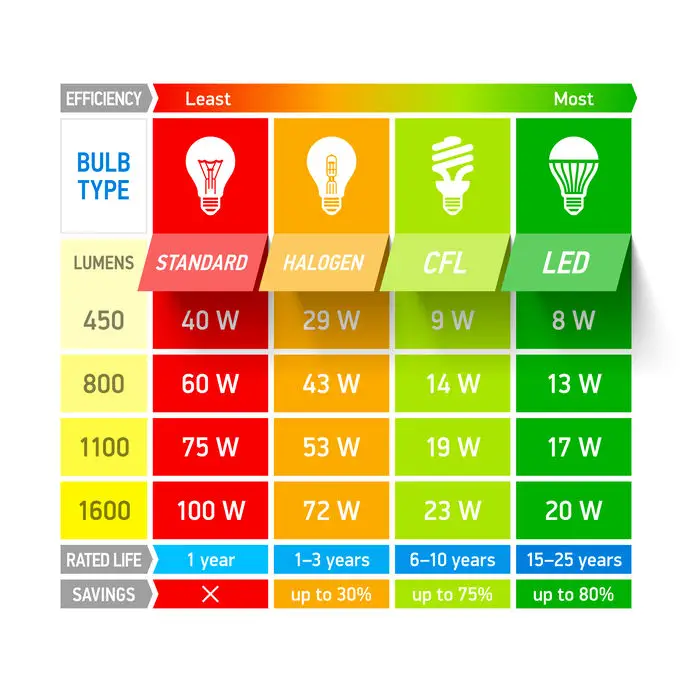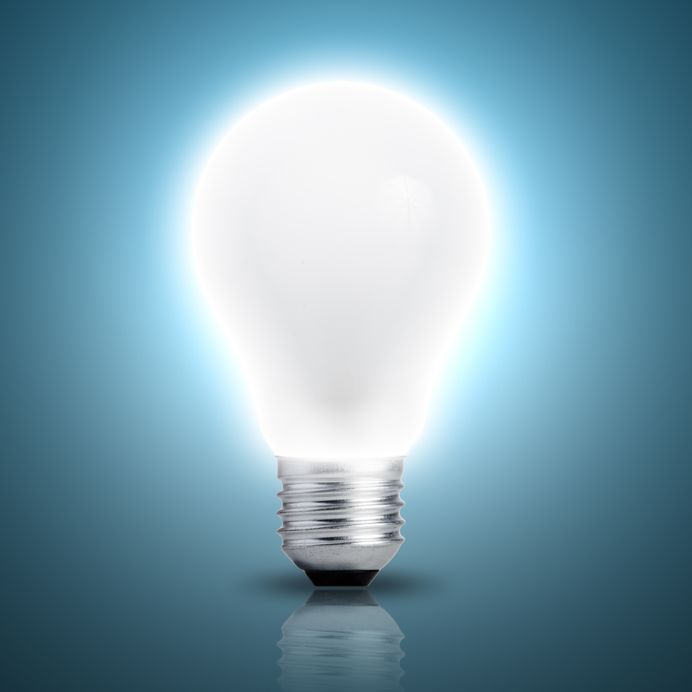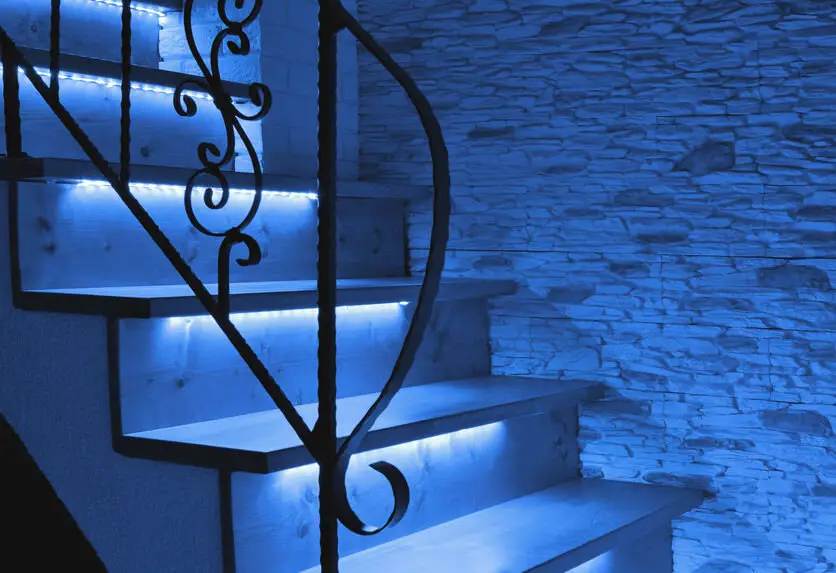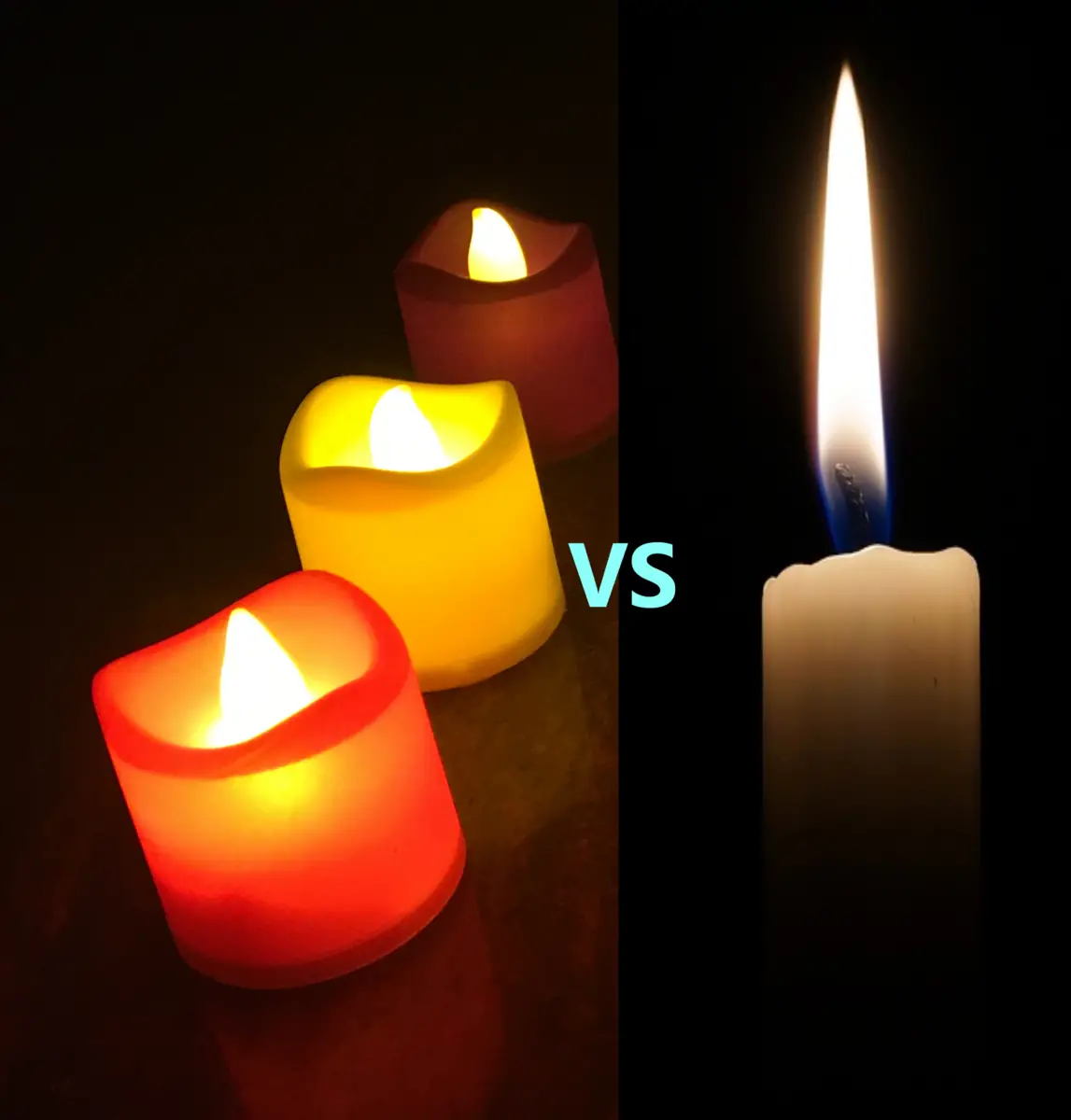Smart Bulb Life Cycle Cost Analysis – Purchase & Electricity
When considering all the different lighting options available these days smart lighting becomes increasingly appealing. Smart bulbs have a lot of functionality that regular bulbs don’t, which mainly include features such as remote controlling and programmable schedules.
That said, these extra functions usually come with a cost. A lot of smart bulbs can be quite an expense upfront, with some models costing upwards of $70.
In 2023 the average cost of a smart bulb is around $21. At this price range, they will produce about 800 lumen, which is the equivalent of 60W incandescent light. Smart bulbs generally last 25000 hours and will cost around $78 in total to run, accounting for the electricity used to run them.
To skip directly to the cost breakdown of smart bulbs you can click here.
Contents
How Much Do Smart Bulbs Cost To Buy?
The first cost we need to look at in order to answer how much it costs to run smart bulbs starts with the first cost, which is the initial purchase of the bulb.
The cost of a smart bulb can depend on a few factors such as:
- The number of functions/customization it has.
- The strength of the bulb.
- The application of the bulb (indoor/outdoor).
- Light quality.
- The brand.
That said, below we will list smart bulbs from a lot of different manufacturers to see where the average price lands. This list will only include smart bulbs, meaning there will be no mention of other forms of lighting such as strips or floodlights.
| Smart Bulbs | Price |
|---|---|
| Philips Hue A21 E26 100W Colour | $64.99 |
| Philips Hue A19 E26 60W White | $25.99 |
| Wyze Bulb White | $8.49 |
| Wyze Bulb Color | $11.49 |
| Cree A19 Soft White Bulb 60W | $12.00 |
| LIFX White E26 | $9.99 |
| LIFX Color E26 | $34.99 |
| Bulbrite Standard E26 Color | $17.99 |
| WiZ Smart Bulb A19 E26 8.8W | $8.99 |
| WiZ Smart Bulb Color A19 | $12.99 |
| Yeelight Smart Bulb W3 White | $12,25 |
| Yeelight Smart Bulb 1S Color | $24.99 |
| Average | $21,17 |
After going through some popular bulbs as well as some lesser-known ones, we have found that the average price of smart bulbs comes to roughly $21,17. This average includes bulbs with high functionality such as colour and colour temperature changing.
For these reasons and for the reasons mentioned above the prices can shift dramatically depending on the bulb. The least expensive bulb out of the bunch is the Wyze White bulb, which is a modest white smart bulb whereas the Philips Hue A21 E26 100W is a colour adaptive bulb with a high light intensity and a lot of additional functions.
Despite all these disparities we will continue to use the number $21,17 for our calculations as it most closely resembles the average cost of a smart bulb.
Factors That Determine The Cost Of Running Smart Bulbs
We now know that smart light bulbs cost an average of $21,17. But that is only one part of the equation. Secondly, we need to know how much smart bulbs actually cost to run over a longer period of time.
Electricity Price
Before doing these calculations we first need to get a good estimate of the average cost of electricity. This will depend a lot on the country you live in and where in the country you live since the price of electricity has a lot of factors and can fluctuate quite a bit.
For these reasons, it is best to do some extra searching yourself to get the most accurate number for where you live, but these are some averages across some of the most populated places in the world;
- In the United States, the average cost of electricity across all states is about 13.19 cents per kWh, with the lowest cost currently being in Louisiana at 9.37 cents per kWh and the highest being Hawaii at 32.76 cents per kWh. For these statistics and for a way to check the average electricity cost in your state we recommend you go here.
- In Europe, the average cost of electricity is 0.2126 Euros ($0,25) per kWh.
- In Canada, the average cost of electricity is about $0.179, varying widely depending on if you live inside or outside the different territories.
- In Asia, the average cost of electricity lies around $0.08-0,20 per kWh depending on where in Asia you live. This is because certain countries in Asia have a vast amount of oils and can therefore produce cheaper energy that way.
- In Australia, the average cost of electricity is around $0,33 per kWh.
As can be seen from these statistics, the average cost of electricity around most of the world hovers around 20-25 cents per kWh. For this reason, we will use an average electricity cost of $0,25 per kWh for our following calculations.
To make the following calculations more accurate for your situation you might need to figure out the kWh price where you live.
This information is usually easily obtainable from the electric bills you receive as they most likely either contain this number by itself somewhere in the paper or are easily calculated by dividing the cost of the electricity for the month by the number of kWh used that same month.
This will give you the price of 1 kWh of electricity. If these numbers are not obtainable at all you can try calling your electricity provider to see how much the electricity actually costs.
Smart Bulbs Use Electricity When Turned Off
The first thing we will discuss regarding using smart bulbs is the fact that they all consume electricity while they aren’t actively producing light. A smart bulb will always consume some electricity because they are always on standby and without being permanently active it can’t receive remote commands.
For this reason, it is also important to consider this when talking about how much smart bulbs cost to run since they are always active to some degree.
For smart bulbs, this power usually comes out to account for anywhere between 2-10% of the total power usage of the smart bulb.
The power used for this is called “Standby power” and will be listed in most technical data sheets for smart bulbs. This number will refer to how much energy the bulb will use while on standby.
For most smart bulbs the standby power will be between 0.2W to 0.5W. We found that the average standby power of the bulbs we’ve mentioned is around 0.3W.
However, throughout the research of this article, we also found that not that many smart bulb manufacturers include this number in their bulbs’ technical data.
Here is a chart of how much energy smart bulbs will use on standby.
| Standby Energy Usage | 0,2W | 0,3W | 0,4W | 0,5W |
|---|---|---|---|---|
| 1 Hour | 0,2W | 0,3W | 0,4W | 0,5W |
| 1 Day | 4,8W | 7,2W | 9,6W | 12W |
| 1 Week | 33,6W | 50,4W | 67,2W | 84W |
| 1 Month | 144W | 216W | 288W | 360W |
| 1 Year | 1,73kWh | 2,59kWh | 3,46kWh | 4,32kWh |
If you are curious as to what these numbers alone translate into cost-wise you can simply take the electricity price previously discussed ($0,25 per kWh) and multiply it by the amount of kW the standby power is.
Click here for a full article on Smart Bulbs Using Electricity When Turned Off.
Smart Bulb Strength
Another important aspect of how much energy a smart bulb will use is dependent on how strong the actual bulb is.
As you may be familiar with, normally bulbs come at different strengths. Some common ones are 40W, 75W and 100W.
However, using the measurement of Watts to describe the light output of a bulb is quite flawed since the light output of an incandescent bulb and an LED bulb will be extremely different when given the same wattage.

For this reason, we will now refer to the strength of these bulbs by their Lumen (lm). Lumen is a unit that measures a quantified amount of light, which makes it a better fit to describe light output.
While you can find smart bulbs that output a wide variety of lumen we found that most smart bulbs are marked around 700-1100lm.
Throughout our research, we found smart bulbs that went as low as 600lm and as high as 1600lm, while the average came close to 900lm.
However, 800lm is by far the most common smart bulb strength, which is why we will focus on bulbs with a strength of 800lm moving forward.
The average marked wattage for smart bulbs marked with 800lm comes out to be 8.8W. This means that the average smart bulb has a luminous efficacy of roughly 91lm/W.
This is much higher than traditional lighting due to the LED technology that smart bulbs make use of.
Luminous efficacy is a number that describes how much light a bulb produces per Watt, which you can easily calculate by dividing the lumen output by its marked wattage. In this instance, it is 800lm divided by 8.8W, which gives us a luminous efficacy of about 91lm/W.
The number we will focus on the most though is 8.8W, as that is the number which we can use to calculate costs later on.
Dimming
Another factor that can play a role in how much energy a smart bulb uses has to do with how you choose to dim it.
We have already discussed that most smart bulbs produce around 800lm. This number describes the light output the bulb has at maximum power, which we mentioned before would be 8.8W on average.
That said, when any light bulb is dimmed down it will also use less energy because it does not need maximum power to produce a smaller percentage of the light.
The amount of dimming on a bulb is directly proportional to how much energy it uses. This means that if you dim a bulb by 50% it will also use 50% of the maximum energy (W).
This all comes back to the luminous efficacy of the bulb because it won’t change depending on how dimmed the bulb is.
This is not something we will consider since we are mostly interested in the cost of running smart bulbs on max strength.
However, if you knowingly will have your smart bulbs dimmed to a certain percentage you should definitely account for that in the cost calculation as it can have a big impact on the results.
Smart Bulb Cost Calculations
With all of this discussed, how much does it actually cost to run a smart bulb over a more extended period of time? In this segment, we will run some calculations on this.
For the sake of making these calculations as accurate as possible, we will use all the average values we’ve previously worked out.
Here is a table which will give you a calculated estimate of the total cost of a smart bulb:
| Smart Bulb Life Cost Calculation | |
|---|---|
| Cost per smart bulb | $21,17 |
| Watts per bulb (equiv. 60W incandescent) | 8.8W |
| Marked standby power | 0.3W |
| Smart bulb projected lifespan | 25,000 hours |
| The total power used for illumination | 220 kWh |
| The total power used for standby | 7,5kWh |
| Total kWh of electricity used (25,000h) | 227,5kWh |
| Cost of electricity (@ 0.25 per kWh) | ~$56,9 |
| The total cost of service life for 1 smart bulb | $78,1 |
The way this calculation is done is by calculating how much energy the bulb will use at 100% power for 25000 hours.
Once we figure out the amount of energy that uses (which we found to be roughly 227,5kWh) you simply multiply that by the electricity price, which we concluded is most accurately represented as 0,25 cents per kWh.
You can figure out the energy usage by simply taking the marked wattage and multiplying it by the number of hours it runs. This gives you a number in Wh, which you can then divide by 1000 to get the value into kWh.
Once we know how much it costs to run for its entire projected lifespan we simply add the purchasing cost of the bulb itself onto that and then we finally have the total cost of the bulb.
We have therefore been able to conclude that the average cost of a smart bulb comes out to around $78 throughout the course of its entire lifespan.
While this number is an estimation found using some average values we have found it does not have to be accurate for every smart bulb. If you know that the smart bulbs you are considering are far outliers from the numbers we have mentioned here you might be better off trying to adjust the calculation to fit your needs better.
Smart Bulbs vs Traditional Bulbs Cost Comparison
We have now concluded that smart bulbs on average cost around $78 to run throughout the entire lifespan of the bulb. However, this number might not tell you much if you don’t know how much its traditional counterparts cost to run.
With this said, how do smart bulbs fare against the traditional bulbs we are used to?
Before we run those calculations there are a few more parameters we should add to it to make it a fair cost comparison. For one we will set a time of 100 000 hours.
What this does is forces us to take standby power into more consideration and it forces us to think about bulbs breaking and needing a replacement.
We will also assume that the bulb will only be illuminated 12 hours a day instead of the full 24 hours we counted before. This makes the calculations a bit more realistic considering that very few indoor bulbs actually get left on all the time every day.
In order to compare these bulbs by how much their upkeep cost it is necessary to set a few baseline numbers. These numbers are all taken from previous points and are compiled into this chart, with the incandescent bulb listed as a common baseline.
| Life Cost Calculation Comparison @800lm | Smart Bulb | Incandescent | Halogen | CFL | LED |
|---|---|---|---|---|---|
| Marked maximum Watt | 8.8W | 60W | 43W | 14W | 8W |
| Marked standby power | 0.3W | 0W | 0W | 0W | 0W |
| Power Used When On 12h | 105,6W | 720W | 516W | 168W | 96W |
| Power Used When Off 12h | 3,6W | 0W | 0W | 0W | 0W |
| kWh of electricity used over 100,000 hours | 455kWh | 3000kWh | 2150kWh | 700kWh | 400kWh |
| Electricity cost @ 0.25 per kWh | $113,75 | $750 | $537,5 | $175 | $100 |
| Light bulb projected lifespan | 25000h | 1000h | 4000h | 12000h | 50000h |
| Cost per bulb | $21,17 | $1 | $2 | $3 | $5 |
| Bulbs needed for 50 000 hours of illumination | 2 | 50 | 13 | 5 | 1 |
| Cost of purchasing new bulbs | $42,34 | $50 | $26 | $15 | $5 |
| Number of days a single bulb will last | 2083 | 83 | 333 | 1000 | 4166 |
| Total cost for 100 000 hours | $156,1 | $800 | $563,5 | $190 | $105 |
Analysis
These calculations tell us a few things. The first thing it tells us is that smart bulbs are not that expensive to run in general when compared to most traditional lighting.
For comparison, running smart bulbs over a longer period of time will cost:
- 80,5% less than an incandescent bulb
- 72,3% less than a halogen bulb
- 17,9% less than a CFL bulb
This means that effectively speaking smart bulbs are not bad at all economically speaking, seeing as traditional bulbs end up costing more in the long run.
That said, smart bulbs also end up costing around 46,7% more than a regular LED bulb, despite utilizing the same technology to produce light.
The reason for this is quite simple. The reason why smart bulbs end up being less efficient than regular LED bulbs is simply due to smart bulbs having more functions and using standby power. Click here for our article on If Smart Bulbs are Energy Efficient.
It is also interesting to note that out of the 455kWh of energy smart bulb use around 15kWh of that is used as standby power, which means it accounted for roughly 3,2% of the bulbs’ total power usage.
Summary
Overall, smart bulbs don’t cost much once you look past the initial purchasing cost. Regular LED bulbs also have this gripe, though it is much more pronounced with smart bulbs since their initial purchasing cost is over 4 times as high.
On average the service life for one single smart bulb comes out to around $78, which is far less than most traditional bulbs when you consider how much more energy those bulbs consume.





